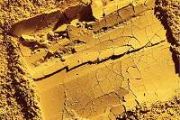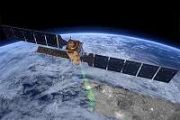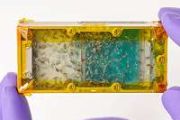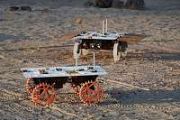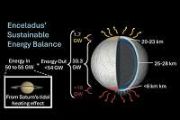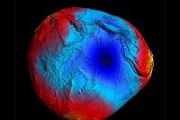
Copernical Team
How space is connecting cars

Today’s connected cars are dynamic, updateable devices – and, because they can be updated, they are well equipped to become tomorrow’s cars. ESA is working with European carmakers to ensure that connected vehicles harness the full potential of space.
Experiments measure freezing point of extraterrestrial oceans to aid search for life
 Researchers from the University of Washington and the University of California, Berkeley have conducted experiments that measured the physical limits for the existence of liquid water in icy extraterrestrial worlds. This blend of geoscience and engineering was done to aid in the search for extraterrestrial life and the upcoming robotic exploration of oceans on moons of other planets.
The r
Researchers from the University of Washington and the University of California, Berkeley have conducted experiments that measured the physical limits for the existence of liquid water in icy extraterrestrial worlds. This blend of geoscience and engineering was done to aid in the search for extraterrestrial life and the upcoming robotic exploration of oceans on moons of other planets.
The r China prepares to launch Tianzhou-4 cargo spacecraft
 The combination of the Tianzhou-4 cargo spacecraft and a Long March-7 Y5 carrier rocket has been transferred to the launching area of the Wenchang Spacecraft Launch Site, the China Manned Space Agency (CMSA) said Saturday.
The CMSA said the Tianzhou-4 cargo spacecraft will be launched in the near future at an appropriate time.
The facilities and equipment at the launch site are in go
The combination of the Tianzhou-4 cargo spacecraft and a Long March-7 Y5 carrier rocket has been transferred to the launching area of the Wenchang Spacecraft Launch Site, the China Manned Space Agency (CMSA) said Saturday.
The CMSA said the Tianzhou-4 cargo spacecraft will be launched in the near future at an appropriate time.
The facilities and equipment at the launch site are in go AST SpaceMobile announces $75M committed equity facility
 AST SpaceMobile, Inc. (NASDAQ: ASTS), the company building the first and only space-based cellular broadband network designed to be accessible directly by standard mobile phones, today announced it has entered into a common stock purchase agreement with B. Riley Principal Capital, LLC ("B. Riley").
The agreement governs a Committed Equity Facility that provides AST SpaceMobile with the rig
AST SpaceMobile, Inc. (NASDAQ: ASTS), the company building the first and only space-based cellular broadband network designed to be accessible directly by standard mobile phones, today announced it has entered into a common stock purchase agreement with B. Riley Principal Capital, LLC ("B. Riley").
The agreement governs a Committed Equity Facility that provides AST SpaceMobile with the rig Japanese radar constellation iQPS selects Virgin Orbit for 2023 launch
 Virgin Orbit (Nasdaq: VORB), a leading satellite launch provider, reports the signing of a launch services agreement with Japanese earth observation constellation operator Institute for Q-shu Pioneers of Space, Inc. ("iQPS"). The satellite is expected to join Virgin Orbit's manifest for early 2023.
Selected for LauncherOne's proven ability to provide direct access to diverse orbits, Virgin
Virgin Orbit (Nasdaq: VORB), a leading satellite launch provider, reports the signing of a launch services agreement with Japanese earth observation constellation operator Institute for Q-shu Pioneers of Space, Inc. ("iQPS"). The satellite is expected to join Virgin Orbit's manifest for early 2023.
Selected for LauncherOne's proven ability to provide direct access to diverse orbits, Virgin Momentus' Vigoride spacecraft arrives at launch site for first flight with SpaceX
 Momentus Inc. (NASDAQ: MNTS), a U.S. commercial space company that plans to offer transportation and other in-space infrastructure services, has announced that its Vigoride orbital transfer vehicle has arrived at Cape Canaveral, Florida, for its inaugural launch.
The Vigoride spacecraft and customer payloads will now be integrated with SpaceX's Falcon 9 launch vehicle ahead of the Transpor
Momentus Inc. (NASDAQ: MNTS), a U.S. commercial space company that plans to offer transportation and other in-space infrastructure services, has announced that its Vigoride orbital transfer vehicle has arrived at Cape Canaveral, Florida, for its inaugural launch.
The Vigoride spacecraft and customer payloads will now be integrated with SpaceX's Falcon 9 launch vehicle ahead of the Transpor Zortrax Z-PEEK confirmed to meet ESA's outgassing requirements
 All polymeric materials must meet strict outgassing requirements before they are cleared for a space flight. Gases released by a vast majority of polymers in high vacuum tend to contaminate sensors and other fragile spacecraft components which severely degrades their performance.
That is why there are only a few polymers suitable for space. Now, Z-PEEK, a 3D printing filament based on poly
All polymeric materials must meet strict outgassing requirements before they are cleared for a space flight. Gases released by a vast majority of polymers in high vacuum tend to contaminate sensors and other fragile spacecraft components which severely degrades their performance.
That is why there are only a few polymers suitable for space. Now, Z-PEEK, a 3D printing filament based on poly Hyperfast white dwarf stars provide clues for understanding supernovae
 Scientists from the RIKEN Cluster for Pioneering Research have used computer modeling to show how a hypothesized type of supernova would evolve on the scale of thousands of years, giving researchers a way to look for examples of supernovae of this model, known as "D6."
Supernovae are important for cosmology, as one type, Ia, is used as a "standard candle" that allows distance to be measure
Scientists from the RIKEN Cluster for Pioneering Research have used computer modeling to show how a hypothesized type of supernova would evolve on the scale of thousands of years, giving researchers a way to look for examples of supernovae of this model, known as "D6."
Supernovae are important for cosmology, as one type, Ia, is used as a "standard candle" that allows distance to be measure Flagship Chinese space telescope to unravel cosmic mysteries
 China's flagship telescope, slated to be launched at the end of 2023, is expected to provide humankind with fresh knowledge about distant galaxies, mysterious dark matter and dark energy, and the past and future evolutions of the universe.
Chinese Survey Space Telescope, also known as the Chinese Space Station Telescope (CSST) and Xuntian Space Telescope, is a space-based optical observato
China's flagship telescope, slated to be launched at the end of 2023, is expected to provide humankind with fresh knowledge about distant galaxies, mysterious dark matter and dark energy, and the past and future evolutions of the universe.
Chinese Survey Space Telescope, also known as the Chinese Space Station Telescope (CSST) and Xuntian Space Telescope, is a space-based optical observato Planet-forming disks evolve in surprisingly similar ways
 A group of astronomers, led by Sierk van Terwisga from the Max Planck Institute for Astronomy, have analysed the mass distribution of over 870 planet-forming disks in the Orion A cloud. By exploiting the statistical properties of this unprecedented large sample of disks and developing an innovative data processing scheme, they found that far away from harsh environments like hot stars, the decli
A group of astronomers, led by Sierk van Terwisga from the Max Planck Institute for Astronomy, have analysed the mass distribution of over 870 planet-forming disks in the Orion A cloud. By exploiting the statistical properties of this unprecedented large sample of disks and developing an innovative data processing scheme, they found that far away from harsh environments like hot stars, the decli 





